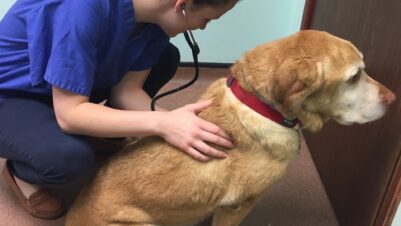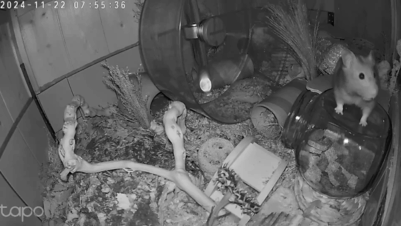
Hybrid cats are domestic cats that have been bred with a wild feline species. While many are not recognised as official breeds by the Governing Council of the Cat Fancy (GCCF), these cat types are becoming increasingly popular due to their striking appearance and exotic appeal. However, while their care can closely resemble that of domestic cats, their wild ancestry necessitates specific considerations, especially in the veterinary setting. This article offers an overview of hybrid cats and practical tips for veterinary professionals to ensure safe, effective and compassionate care.
What are hybrid cats?
Hybrid cats are the offspring of a domestic cat (Felis catus) bred with a wild feline species. The most common hybrid cat breeds include:
- Bengal: a cross between a domestic cat and the Asian leopard cat (Prionailurus bengalensis)
- Savannah: a cross between a domestic cat and the African serval (Leptailurus serval)
- Chausie: a cross between a domestic cat and the jungle cat (Felis chaus)
- Caracat: a cross between a domestic cat and the caracal (Caracal caracal)
Hybrid status is typically designated by filial generation (F1, F2, F3, etc), where F1 is the first generation born from a direct wild/domestic cross. The higher the filial number, the more domesticated the behaviour, although it is important to point out that wild instincts can persist throughout the generations. For example:
| F1 = Serval x domestic cat F2 = F1 x domestic cat F3 = F2 x domestic cat |
Tips for handling hybrid cats in the veterinary practice
1. Identify the breed and filial generation
Early generation hybrids (F1 to F3), due to their larger size and closer wild ancestry, often require a more tailored handling and management approach to ensure safety and welfare
Always confirm the cat’s breed and filial generation prior to their visit and clearly document this in the clinical records to ensure all team members are informed. Early generation hybrids (F1 to F3), due to their larger size and closer wild ancestry, often require a more tailored handling and management approach to ensure safety and welfare.
2. Use pre-visit pharmaceuticals and sedation
Later generation hybrids (F5 onwards) can often be managed with low-stress handling techniques, such as those in the Cat Friendly Guidelines. However, earlier generation hybrids (F1 to F3) may require pre-visit medication or sedation to minimise stress and ensure safety. Any medications should always be discussed between the veterinary surgeon and owner.
3. Modify the environment
Early generation hybrid cats are often significantly larger than domestic cats, frequently exceeding 10kg in weight. As such, they require appropriately sized hospital enclosures that can accommodate all essential resources without overcrowding. These spaces should be situated away from potential stressors, including dogs and unfamiliar cats, to minimise anxiety and stress. All resources should be adapted to suit the hybrid’s size and strength, ensuring safety and comfort. Environmental enrichment remains important, but care must be taken when selecting enrichment items; larger hybrids may be more likely to destroy or ingest objects that would be safe for domestic cats, presenting an increased risk of injury or obstruction.
4. Schedule longer appointments
Hybrid cats may require additional time to acclimatise to the clinical environment due to their heightened sensitivity and potential for stress-related behaviours
Hybrid cats may require additional time to acclimatise to the clinical environment due to their heightened sensitivity and potential for stress-related behaviours. Allocating longer appointment times allows for a more gradual approach to handling, which can enhance both feline and human safety, reduce stress and improve the quality of care provided. Extended consultations also create space for meaningful communication with owners about behaviour, husbandry and welfare needs (Rodan et al., 2011).
5. Educate and collaborate with owners
Veterinary professionals are in a unique and trusted position to guide owners in understanding and meeting the complex needs of hybrid cats. While many hybrid cat owners are highly invested in their pets, they may be unaware of the specific challenges associated with their care, including behaviour management, enrichment and appropriate housing. As advocates for animal welfare, veterinary teams play a crucial role in educating owners and promoting practices that support the long-term well-being of both the cat and their household. Engaging owners in collaborative discussions fosters responsible ownership and helps prevent welfare compromises or potential relinquishment (Yeates and Main, 2009).
Legal and ethical concerns of hybrid cats
F1 hybrids (first generation) are classified as an exotic/wild animal and therefore require a dangerous wild animal licence from the local council
In the UK, there are regulations around owning hybrid cats that veterinary professionals should familiarise themselves with. F1 hybrids (first generation) are classified as an exotic/wild animal and therefore require a dangerous wild animal licence from the local council. In terms of travelling, there are stricter rules with early generations: F1 to F4 hybrids require CITES permits for international import/export. However, F5 onward no longer need CITES, but must have pedigree proof (eg TICA F5 certificate).
Although there are a small number of regulations in place, The Cat Group – comprising several welfare organisations including Battersea, Cats Protection and iCatCare – believes that more needs to be done. The group recently issued a position statement, which stated that it does not support the breeding of wild cat hybrids or the keeping of them as pets. It is also calling on the UK government to implement recommendations set out in the Animal Welfare Committee 2024 report, which outlines the banning of deliberate hybrid breeding and the import of domestic wild cat hybrids.
Conclusion
Hybrids blur the line between wild and domestic cats, which requires veterinary professionals to be flexible, informed and patient in their approach when they are brought to the veterinary practice. It is imperative that all members of the veterinary team have a clear understanding of the individual backgrounds and behavioural tendencies of these breeds to ensure compassionate, safe and effective care. Alongside this, future focus should be on educating the public to better inform them of the welfare implications that could arise when owning a hybrid cat.







